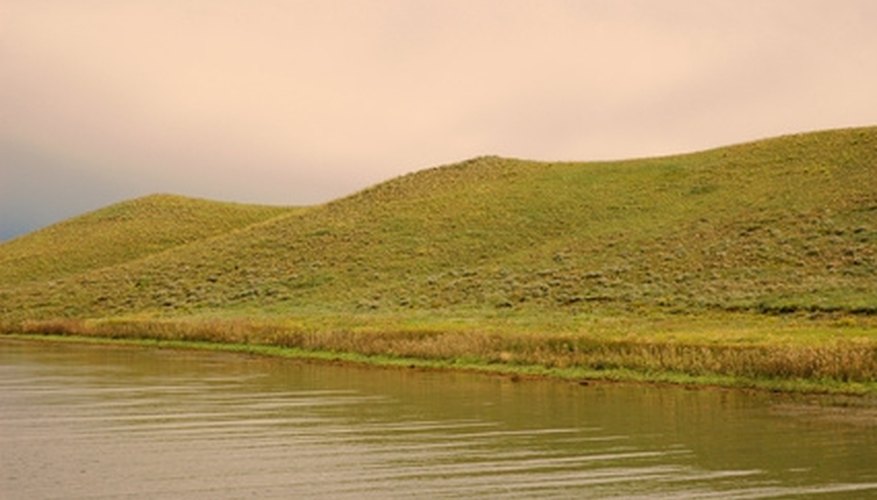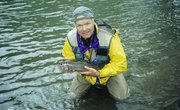
Kokanee salmon are a land-locked variety of sockeye salmon. The kokanee evolved in inland lakes and never make it to the open ocean in their life-cycle. Utah's Strawberry Reservoir, in the Uinta National Forest east of Provo, was planted with kokanee. It is also a world-class fishery for Bear Lake Cutthroat trout and sterile Rainbow trout. The lake can be fished from shore, or by boat and float tube. Because they seek the colder, deeper water, most salmon are caught fishing from boats.
Items you will need
Boat
Flies
Trolling gear
Utah fishing license
Seek the deeper water. A good depth finder is a valuable tool searching for schools of salmon. Strawberry Reservoir also is well mapped. Good contour maps showing depths can be bought at the marina store. Kokanne prefer a band of water that is 50 degrees. The air temperature in Utah can reach 90 to 100 degrees in mid summer. If most of the lake heats up above 50 degrees, salmon will concentrate in the deepest reaches near the bottom.
Troll a lure with weighted line to reach optimal depth. Your lead-core line should have 4 to 6 feet of mono-filament leader before the lure. Trolling speed is slower for salmon than for cutthroat trout. Trolling in S curves will help vary the speed and depth of your lure. Smaller spinners and wobblers are best as the kokanee salmon have a smaller mouth than cutthroat or rainbow trout. Silver flashers and shiny silver lures work best. Salmon congregate and feed in schools, and often mistake the silver flash for other salmon feeding. When you start getting good strikes, or catch a fish at a certain depth, make repeated passes over the same area. Unlike roaming cutthroat trout, salmon travel very little when feeding.
Jig for salmon with a salmon fly, or small lure, tipped with a worm, salmon egg, or grub. Salmon most often strike a fly or lure that is sinking or drifting. Lures should be retrieved or trolled at the slowest possible speed that will keep the lures action and movements natural.
Find the schools of salmon. Ask where the most likely salmon areas are. Certain shores and bays are more productive than others. Strawberry marina and other area angling shops have licensed local guides that can be hired. Laking any inside information, the best way to find schools is to cover a lot of water. Troll your boat in large S curves until you get strikes or catch a fish. Once you find the salmon, troll trough the same area repeatedly. Vary your speed and try different lures. Once you find the salmon, stay with them.
Warnings
- There are special regulations for fishing Strawberry reservoir. You may only keep 4 trout in the aggregate. Salmon are included in the 4. There is a slot limit for cutthroat. Only one cutthroat over 22 inches can be kept. All cuttroat between 15 and 22 inches must be imediately released. Only 2 cutthroat under 15 inches can be kept. Catch and release is encouraged for cutthroat. Rainbow trout stocked into the lake are sterile, so they do not cross breed with the pure strain of cutthroat. This also means the rainbow grow larger, faster. Rainbow trout in the 6 to 10 pound range are caught daily.
Tips
- Most Strawberry reservoir anglers are fishing for big cutthroat or rainbow trout. Salmon have different habits. A productive angler may catch hundreds of cutthroat, and never see a salmon. Techniques for fishing are different. If you do not find salmon, Strawberry is one of the most productive lakes in the U.S. for large trout.
References
Tips
- Most Strawberry reservoir anglers are fishing for big cutthroat or rainbow trout. Salmon have different habits. A productive angler may catch hundreds of cutthroat, and never see a salmon. Techniques for fishing are different. If you do not find salmon, Strawberry is one of the most productive lakes in the U.S. for large trout.
Warnings
- There are special regulations for fishing Strawberry reservoir. You may only keep 4 trout in the aggregate. Salmon are included in the 4. There is a slot limit for cutthroat. Only one cutthroat over 22 inches can be kept. All cuttroat between 15 and 22 inches must be imediately released. Only 2 cutthroat under 15 inches can be kept. Catch and release is encouraged for cutthroat. Rainbow trout stocked into the lake are sterile, so they do not cross breed with the pure strain of cutthroat. This also means the rainbow grow larger, faster. Rainbow trout in the 6 to 10 pound range are caught daily.


